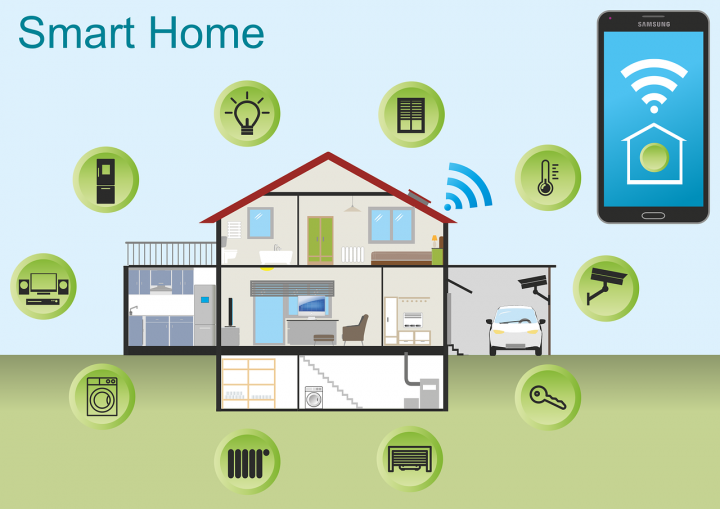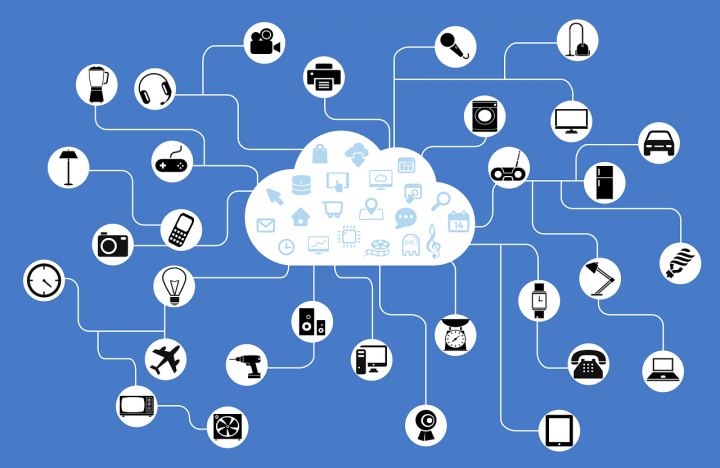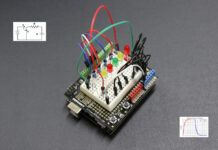“Smart home” and “Home automation” are the same – the terms are simply used interchangeably. Smart home or home automation refers to the use of IoT (Internet of Things) apps or devices to control and access other systems and appliances in your home. There are lots of smart home techs already in the market: They help to make things easily accessible around a room or the house in its entirety.
So many trends and innovations have greased the smart home technology. Here, I’ll be discussing the things you should know about smart homes and modern home automation tech (devices and apps).
The 10 Things to Know About Smart Homes and Home Automation
 Come along with me as I walk you through some of the prominent things to know about smart homes and home automation in this age of AI and smart robots.
Come along with me as I walk you through some of the prominent things to know about smart homes and home automation in this age of AI and smart robots.
1. A smart home really makes a lot of things easy
With the aid of smart home techs (devices/apps), you can sit anywhere and access or control your connected devices. For example, if your washing machine is smart home compatible, you could control it from anywhere without making physical contact with the machine.
Similarly, if your garage door or house doors are smart home compatible, you could open and close them without touching the handles. In the same way, you can easily access and control other IoT appliances or devices in your home, which include bulbs, home entertainment systems, etc.
2. Home automation costs a lot of money
Setting up home automation is very expensive. You will need to replace your basic appliances with their smart counterparts. Plus, not all smart appliances are compatible with smart home tech; you may need to replace such appliances or devices with their smarter counterparts.
Literally, setting up a smart home means you will buy new smart home appliances, switches, devices, plugs, et al., and these smart home gears cost more than their typical /conventional counterparts. Furthermore, smart home gears are typically delicate and liable to different malfunctions; this means you may still spend a lot of money to fix/troubleshoot/repair them quite frequently.
3. Saves Energy
You probably have heard that smart home technology saves energy – yes, that’s true. Smart home systems are typically energy efficient in the sense that automated thermostats are flexible enough to allow their users to pre-program temperatures based on possible factors.
However, when people say that home automation is energy efficient, it actually points down to the type of smart home device you have and its automation capabilities. Nevertheless, on average, IoT manufacturers preach that automated systems can reduce heating and cooling bills up to 15 percent.
4. Home Automation Can Be Wireless or Wired
There are basically two ways to set up home automation: wireless or wired. In a wireless home automation setup, wireless connectivity systems are used; this includes infrared, GSM, Wi-Fi, Bluetooth, et al. In contrast, wired home automation is achieved by connecting cables from different smart home devices, appliances, and switches to a centralized control panel/box.
The essence of connecting home automation systems to the main controller (centralized control box or panel) is to ensure effective communication between the devices. In a wireless setup, everything is connected to a router or a home internet device.
5. Security Concerns
Smart home systems and devices are pretty intelligent; they can save a lot of information regarding your home, and maybe some of your personal details. Thus, if the device is compromised or hacked, you could be dealing with serious security/data breach situations.
Nevertheless, smart home devices, leveraging motion sensors, can help to improve security in your home. Also, smart locks and remote monitoring systems can help to fortify your home security. But all these can be hacked and compromised; hence, if your home relies fully on automated systems, when the smart home security devices are tampered with, you could be facing a critical situation.
6. Smart Home Thrives With Internet Connection
If you live in an area where internet connectivity is low or sluggish, it may be very frustrating to run a fully automated home. Smart homes rely on a seamless and fast internet connection to respond quickly to the instructions from homeowner.
Hence, if your ISP doesn’t provide you with stable internet connectivity, you should switch to another ISP if you must run a smart home.
7. Compatibility Issues
While home automation devices are built to enable communication between one another (usually through a centralized control), not all of them are actually compatible with each other. For example, your automated security system may require a specific location/IP before you can access its settings, while a smart home thermostat may require another platform altogether.
Incompatibility concerns are among the drawbacks of switching to smart homes. However, technology innovations sprout every day, and this particular concern regarding home automation is getting solved over time.
8. Complexity
Inasmuch as smart home devices are advertised as “easy to use” devices, the truth remains that turning your residence into a fully smart home can be stressful. Now, you will have to always reach out to your smartphone or devices like Amazon Echo, Google Home, etc., just to turn off the lights in your room. This is something you could have done by simply flipping a traditional switch.
9. Convenience
It’s important to point out “convenience” as one of the things you should know about home automation. In the previous paragraph, I hinted at how stressful it could be to rely on smart home devices to run some tasks that might be done faster through traditional means. Now, here’s another scenario.
What if you left the house without turning off your electrical gadgets/appliances? Obviously, if the gears are smart home compatible, you can remotely turn them off from anywhere. This is one of the proofs that a smart home improves convenience and flexibility.
10. Brings Everything Together
 One of the overlaying benefits of a smart home is the fact that it brings everything together. When you turn your residence into a smart home, it means you can access and control everything in the house from a centralized control panel, device, or box.
One of the overlaying benefits of a smart home is the fact that it brings everything together. When you turn your residence into a smart home, it means you can access and control everything in the house from a centralized control panel, device, or box.
Interestingly, there are lots of smart home devices and appliances coming up on a daily basis. These devices come with cutting-edge tech to make smart homes easier to manage and more accessible.
What More?
With home automation comes limitless possibilities in homes and offices. These techs can supercharge your home by connecting your smart TV, phones, and other gadgets to a simple control unit, just as you’ve seen in this page.
Generally, a smart home makes things easier (especially for people who live alone). In contrast, your security/privacy can be at great risk if your smart home devices get compromised. Although home automation looks to be the “future,” at the moment, the technology isn’t perfect yet. In all, before switching to a smart home, think well if you’re really ready for it – you’ll spend a lot to set up a smart home – do you really have the budget?

















